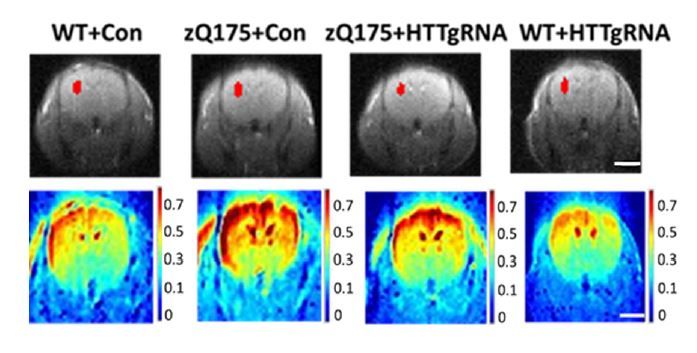fMRI Identifies Potential Biomarker for Huntington’s Disease
Scans measure blood volume in the brain, assessing oxygen levels and helping to track progress of gene-editing therapies.
Brain blood volume measurements captured with functional MRI (fMRI) scans can potentially help with slowing down the progression of Huntington’s disease.
In a study published recently in Brain, a team of investigators from Johns Hopkins Medicine outlined how these non-invasive scans can reveal changes in blood volume in mice, indicating the progress of gene-editing therapies used for early-stage Huntington’s. These findings help explain whether these measurements can be a reliable biomarker for the disease.
“What’s exciting about this study is the opportunity to identify a reliable biomarker that can track the potential success of genetic therapies before patients start manifesting symptoms,” said Wenzhen Duan, M.D., Ph.D., director of the translational neurobiology laboratory and psychiatry and behavior sciences professor at Johns Hopkins School of Medicine. “Such a biomarker could facilitate the development of new treatments and help us determine the best time to begin them.”
Huntington’s is caused by a single defective gene, called huntingtin, on human chromosome 4. For their study, Duan’s team used fMRI scans with mice genetically engineered to carry the huntingtin gene. They used the images to map blood flow trajectory in the brain’s small blood vessels, using blood volume to measure oxygen supply. This is a key piece of information because Huntington’s disease dramatically decreases the brain’s arterial blood volume, leading to increasing neuronal deterioration from low oxygen as the disease progresses.
The team conducted fMRI scans on mice with a suppressed huntingtin gene and a control group with an unedited gene. They assessed abnormalities in the trajectory of arteriolar blood volumes at three, six, and nine months, corresponding to pre-symptom, beginning, and post-symptom stages.
According to their assessments, the scans revealed that, in a possible vascular response to decreased neuronal brain function, smaller blood vessels had reduced diameter and increased density. This finding, they said, suggest that compromised vascular structure could lead to lower blood volumes and a decreased ability to compensate for the loss during the symptom stage.
Representative cerebral blood volume maps in mouse brains from indicated genotypes and treatment groups. Top row shows the raw images — the red regions of interest indicate the quantified brain region. Bottom row shows the representative cerebral blood volume maps in the mice at the indicated genotypes and treatment at 3 months of age. The scale bars are shown on the right. Warmer color represents higher cerebral blood volume values.
Credit: Wenzhen Duan, M.D., Ph.D.

In addition, the team investigated whether it was possible to delay or prevent disease progression by introducing an altered huntingtin gene to mice during the pre-symptom phase at two months of age. After three months, their cerebral arteriolar blood volume, seen via fMRI, was similar to the control group, they said.
With fMRI, they said, they were able to show that significant changes in arteriolar cerebral blood volume begin before the degeneration of neurons and symptom onset.
“Overall, our data suggest that the cerebral anteriolar blood volume measure may be a promising non-invasive biomarker for testing new therapies in patients with Huntington’s who are yet to show symptoms of the disease,” Duan said. “Introducing treatment in this early stage may have long-lasting benefits.”
Validating the findings from these scans in human clinical trials is the next step to developing more efficient therapeutic interventions, they said.
For more coverage based on industry expert insights and research, subscribe to the Diagnostic Imaging e-Newsletter here.
Study: Monitoring of Prostate MRI Exams Could Lead to 75 Percent Reduction of Gadolinium Contrast
March 17th 2025While DCE MRI was deemed helpful in over 67 percent of cases in which it was used, researchers found that monitored prostate MRI exams, which facilitated a 75 percent reduction of DCE MRI sequences, had comparable sensitivity for prostate cancer as non-monitored exams.